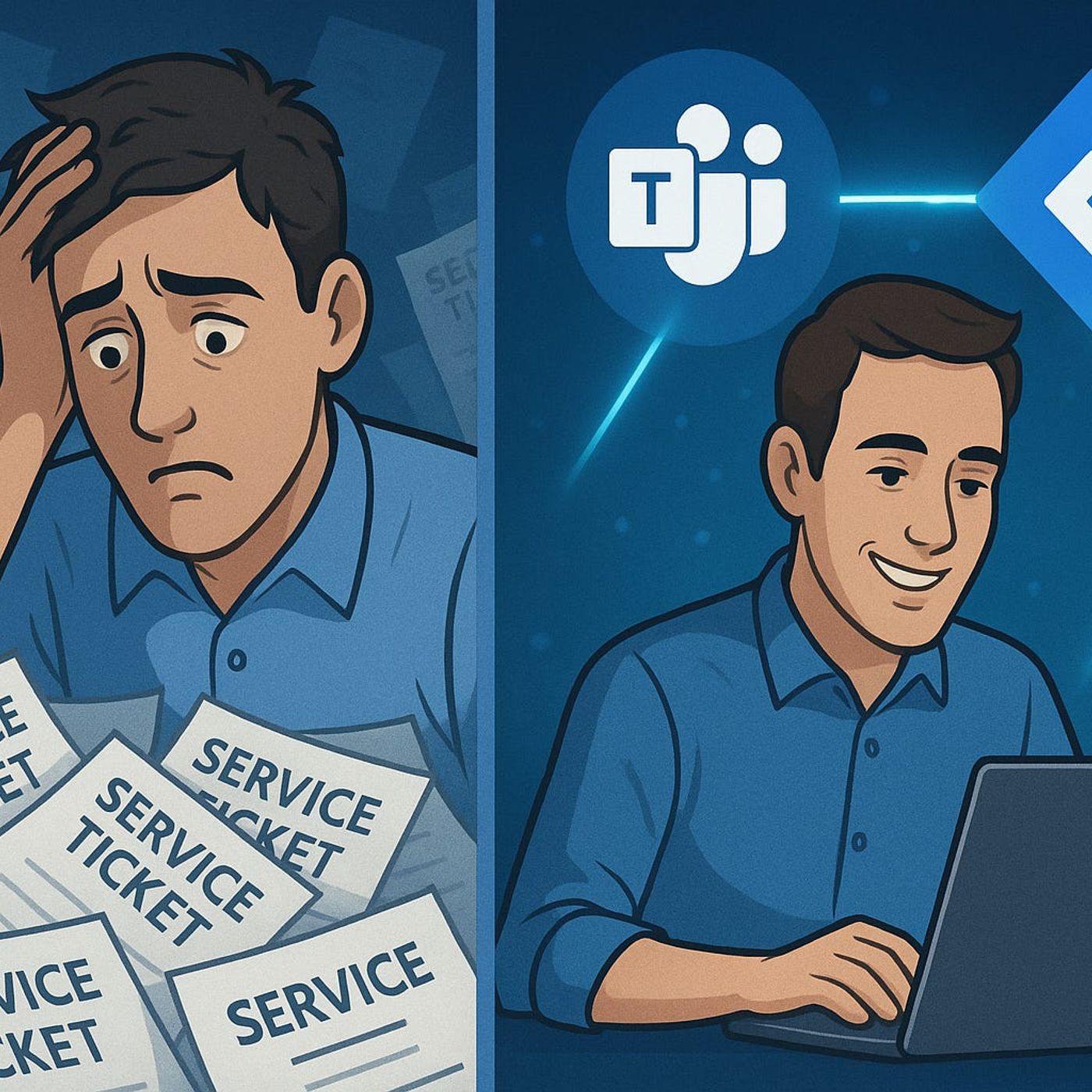Podcast Episode Details
Back to Podcast Episodes
Jira + Teams: The IT Support Shortcut
Most IT teams don’t realize this: 90% of users actually prefer logging tickets directly inside Teams over going to a separate portal. That’s not just a bump in convenience—that’s a game-changer for adoption.Today, we’re unpacking why this one integration between Jira Service Management and Microsoft Teams doesn’t just make people happier—it makes IT support nearly one-third faster. And the best part? You probably already have everything set up in your Microsoft 365 environment to start using it right now.Why Submitting Tickets in Teams Feels EffortlessMost people hear the phrase “submit a ticket” and instantly think of annoying forms, multiple dropdowns, or remembering yet another URL they rarely use. But when the same process happens inside Microsoft Teams, it feels completely different. The action doesn’t carry the same weight or frustration because you’re not stepping into a separate, foreign system. You’re just continuing a conversation in the tool you’re already working in. That small shift changes how people interact with IT support on a daily basis. The traditional model asks everyone to log into a dedicated IT portal, which usually has a wealth of features, dashboards, and knowledge articles. On paper, it looks powerful. In practice, though, most people rarely go there unless they absolutely have to. That creates a divide: IT builds processes in one place while employees are spending their entire day somewhere else. The result is predictable. Requests come by chat, email, or hallway conversations, while the official system sits mostly unused. That lack of adoption doesn’t just annoy the IT staff—it slows down the entire response cycle, because important context never makes it into the system right away. Now picture someone sitting in a Teams meeting. They’re presenting slides and suddenly their Outlook calendar isn’t sync’ing correctly. In the old world, what are their options? End the meeting early, open a browser, hunt down the IT portal link, log in, and try to describe the problem from memory. Most people simply decide, “I’ll deal with it later.” But with a Teams integration, the same employee hits a button, fills out a lightweight form in a chat window, and goes back to presenting in under a minute. The choice is obvious—one option breaks the flow of work, while the other barely interrupts it. This is why the familiar interaction patterns in Teams matter so much. People are already used to chatting with coworkers, responding to adaptive cards from other apps, and filling out short prompts without thinking about it. When ticket creation follows the same design language, it doesn’t feel like a new tool to learn. It feels like every other Teams workflow they already do daily. That familiarity lowers the barrier to entry and removes the intimidating sense of “filing” a ticket in some bureaucratic system. Instead, it feels more informal, more practical, and within the same environment they trust for everything else. The backbone of this experience lies in embedded forms and adaptive cards. These don’t look like a giant multi-page web form with twenty mandatory fields. They look like a simple chat message asking for a description, a category, maybe a screenshot. Each field aligns visually with the flow of Teams, so completing it feels more like sending a message than filling in a report. Even more, the adaptive card can adjust based on the type of request, guiding the employee without overwhelming them. That’s a subtle but powerful design shift. All of this isn’t just a front-end gimmick. Those quick prompts connect directly to the structured workflows inside Jira Service Management. Behind the scenes, the request isn’t casual at all—it lands with the proper issue type, mapped fields, and the same routing rules admins enforce in Jira. The employee sees a lightweight chat, but IT receives a fully formed ticket. The two sides get exactly what they need without one having to compromise for the other. That explains why adop
Published on 1 week ago